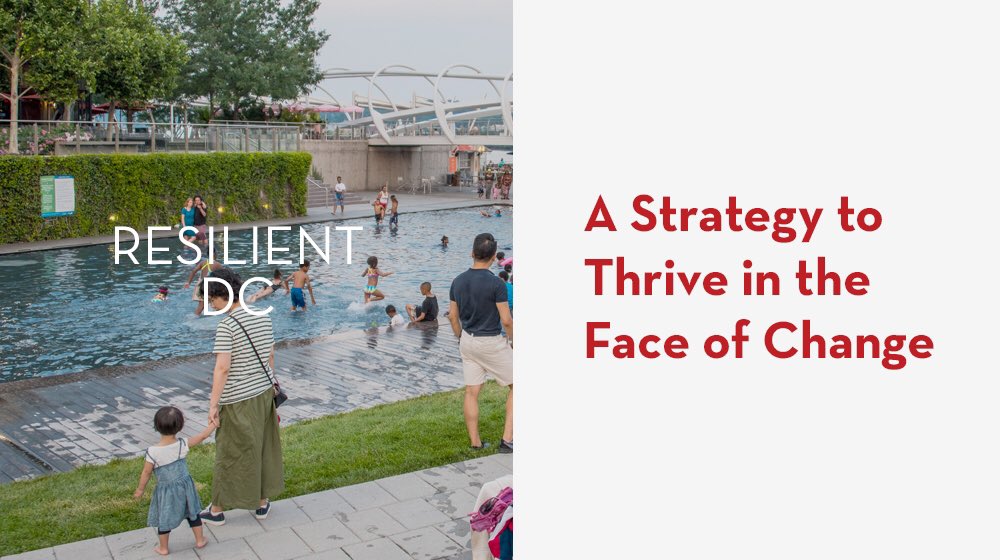The D.C. government on Monday announced a plan titled “Resilient D.C.” which calls for retrofitting or removing all flood-prone buildings by 2050, among other measures for strengthening the city and reducing risks.
D.C. will be the first major city in America to adopt such a policy. The proposal aims to protect the city that is home to 700,000 people and also the headquarters of most of the federal agencies. The plan lays out a range of goals on how to cope with severe floods and heat waves for the city located at the junction of Anacostia and Potomac Rivers.
The plan was released by D.C. Mayor Muriel Bowser, City Administrator Rashad Young, and Chief Resilience Officer Kevin Bush. The strategy will be implemented by the Office of the City Administrator (OCA) within the Executive Office of the D.C. mayor.
“Washington, D.C. is one of the strongest, most diverse, and most vibrant cities in the United States; for our growth and prosperity to continue, we must make sure that we are prepared for the unexpected and are resilient in the face of change and challenges,” Bowser said in a press release on Monday.
“Through Resilient D.C., we have the opportunity to work together across disciplines to tackle the challenges of today and tomorrow and make D.C. a model for cities across the nation,” the mayor said.
She also highlighted that the plan was addressing “everyday issues such as poverty and inequality”, in addition to unexpected and catastrophic occurences.
The plan to address the District’s most significant challenges was in preparation for two years. Over 100 community leaders and subject matter experts contributed to the plan with their ideas. About 1,100 residents across eight wards shared their ideas for building resilience, as well.
Michael Berkowitz, President of 100 Resilient Cities, said that Resilient D.C. is a forward-thinking roadmap that will help all Washingtonians thrive in the face of change.
https://twitter.com/resilient_dc/status/1122940368968925190
“This strategy stands out as both comprehensive in its scope and innovative in its approach – tackling longstanding and persistent challenges, such as flooding, crime, and inequality, while simultaneously preparing the District for emerging and future challenges, such as the impacts of technology and growth on D.C.’s economy and neighborhoods. This thoughtful strategy positions the District as a leader for the nation and for other global cities around the world,” said Berkowitz.
Resilient D.C. plan outlines 16 objectives, 68 initiatives, and two focus areas based on analysis of present conditions and inputs from stakeholders from across the city.
All buildings, including homes, businesses, and hospitals will be part of the new plan. Federal government buildings can also be included, although the District has limited authority over them. For each building “a mix of regulations, incentives and outreach” is envisioned in the plan.
District of Columbia and 100 Resilient Cities partnered to provide financial and technical assistance for Resilient D.C.

